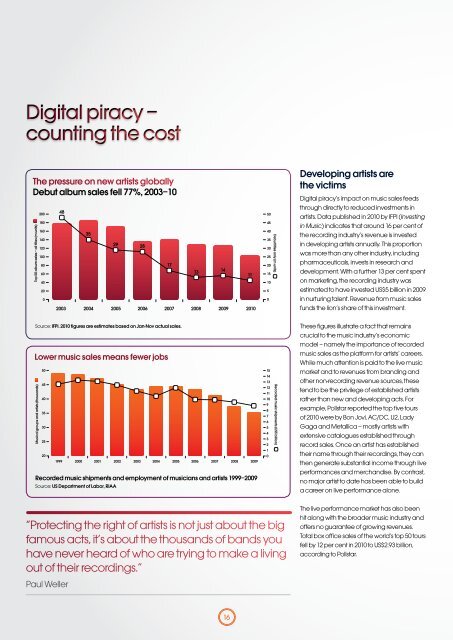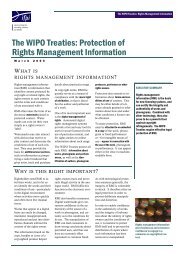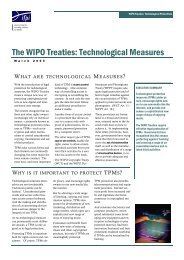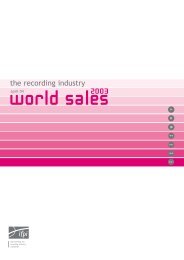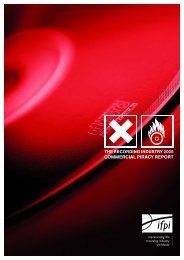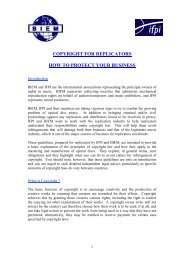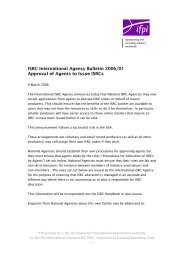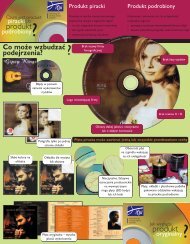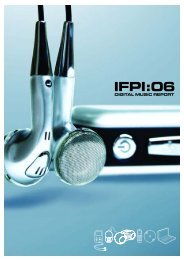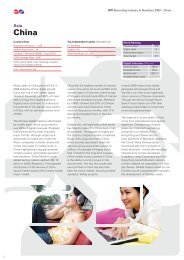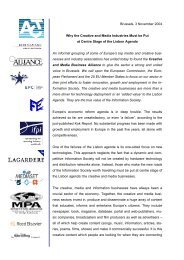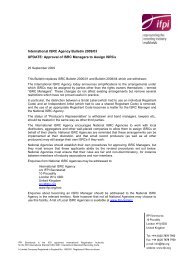IFPI Digital Music Report 2011
IFPI Digital Music Report 2011
IFPI Digital Music Report 2011
You also want an ePaper? Increase the reach of your titles
YUMPU automatically turns print PDFs into web optimized ePapers that Google loves.
<strong>Digital</strong> piracy –<br />
counting the cost<br />
The pressure on new artists globally<br />
Debut album sales fell 77%, 2003–10<br />
Top 50 album sales – all titles (m units)<br />
Source: <strong>IFPI</strong>. 2010 figures are estimates based on Jan-Nov actual sales.<br />
Lower music sales means fewer jobs<br />
<strong>Music</strong>al groups and artists (thousands)<br />
200<br />
180<br />
160<br />
140<br />
120<br />
100<br />
80<br />
60<br />
40<br />
20<br />
0<br />
50<br />
45<br />
40<br />
35<br />
30<br />
25<br />
20<br />
48<br />
35<br />
29 28<br />
2003 2004 2005 2006 2007 2008 2009 2010<br />
1999 2000 2001 2002 2003 2004 2005 2006 2007 2008 2009<br />
Recorded music shipments and employment of musicians and artists 1999–2009<br />
Source: US Department of Labor, RIAA<br />
17<br />
13 14<br />
11<br />
50<br />
45<br />
40<br />
35<br />
30<br />
25<br />
20<br />
15<br />
10<br />
5<br />
0<br />
15<br />
14<br />
13<br />
12<br />
11<br />
10<br />
9<br />
8<br />
7<br />
6<br />
5<br />
4<br />
3<br />
2<br />
1<br />
0<br />
Debut titles only (m units)<br />
Recorded music shipments (US$ billion)<br />
Developing artists are<br />
the victims<br />
<strong>Digital</strong> piracy’s impact on music sales feeds<br />
through directly to reduced investments in<br />
artists. Data published in 2010 by <strong>IFPI</strong> (Investing<br />
in <strong>Music</strong>) indicates that around 16 per cent of<br />
the recording industry’s revenue is invested<br />
in developing artists annually. This proportion<br />
was more than any other industry, including<br />
pharmaceuticals, invests in research and<br />
development. With a further 13 per cent spent<br />
on marketing, the recording industry was<br />
estimated to have invested US$5 billion in 2009<br />
in nurturing talent. Revenue from music sales<br />
funds the lion’s share of this investment.<br />
These figures illustrate a fact that remains<br />
crucial to the music industry’s economic<br />
model – namely the importance of recorded<br />
music sales as the platform for artists’ careers.<br />
While much attention is paid to the live music<br />
market and to revenues from branding and<br />
other non-recording revenue sources, these<br />
tend to be the privilege of established artists<br />
rather than new and developing acts. For<br />
example, Pollstar reported the top five tours<br />
of 2010 were by Bon Jovi, AC/DC, U2, Lady<br />
Gaga and Metallica – mostly artists with<br />
extensive catalogues established through<br />
record sales. Once an artist has established<br />
their name through their recordings, they can<br />
then generate substantial income through live<br />
performances and merchandise. By contrast,<br />
no major artist to date has been able to build<br />
a career on live performance alone.<br />
“Protecting the right of artists is not just about the big<br />
famous acts, it’s about the thousands of bands you<br />
have never heard of who are trying to make a living<br />
out of their recordings.”<br />
Paul Weller<br />
The live performance market has also been<br />
hit along with the broader music industry and<br />
offers no guarantee of growing revenues.<br />
Total box office sales of the world’s top 50 tours<br />
fell by 12 per cent in 2010 to US$2.93 billion,<br />
according to Pollstar.<br />
16


